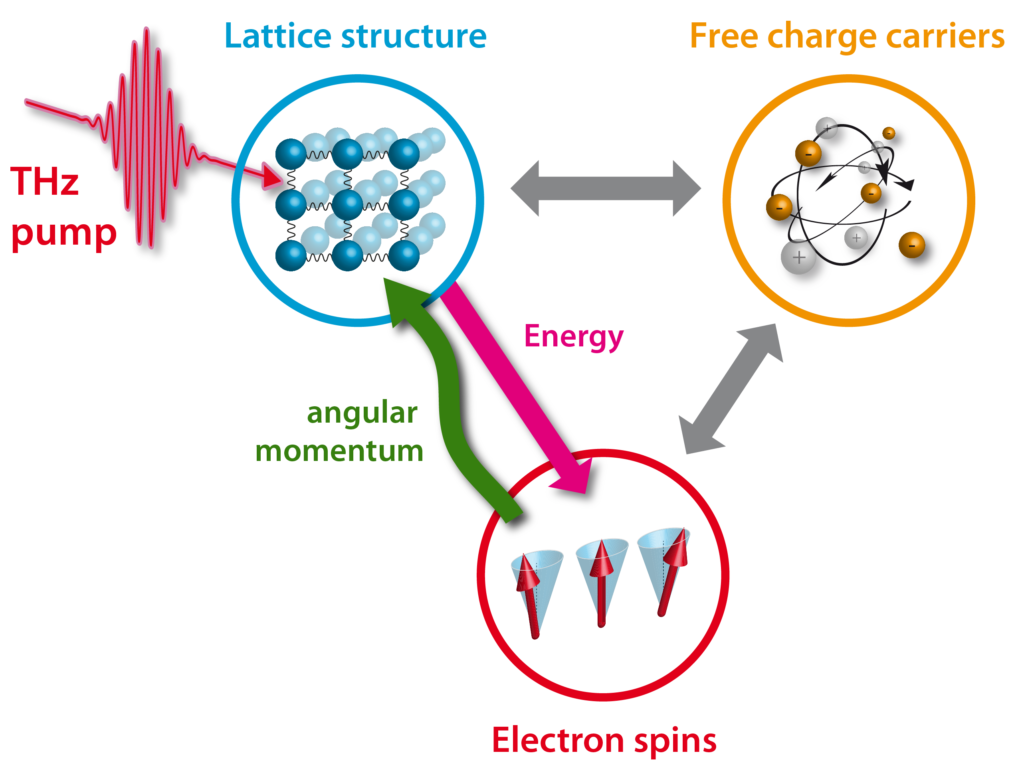![]() High field THz lab
High field THz lab
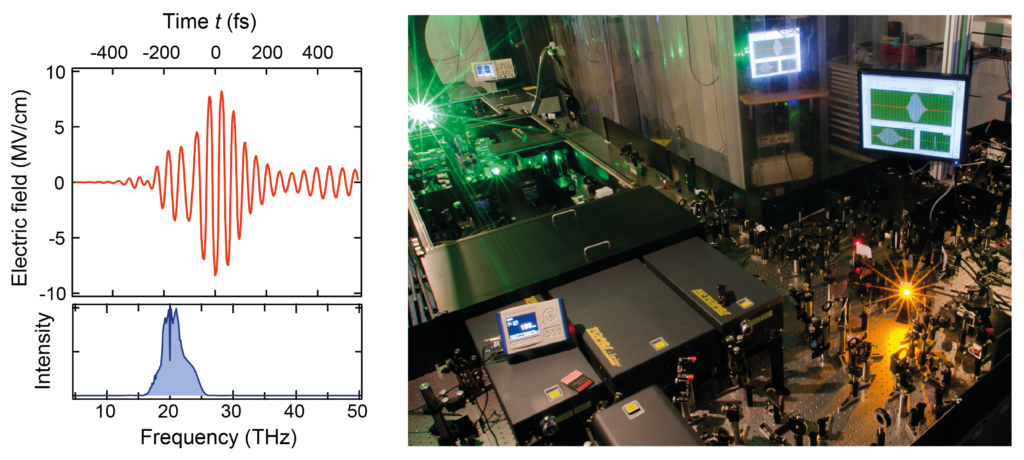
To directly address fundamental structural resonances (phonons, vibrations and rotations) in solids and molecules on their natural time – and energy scales, we make use of phase stable laser pulses in the THz and midinfrared (MIR) spectral range. The oscillating electric field of these pulses can be directly traced in amplitude and phase in time domain. In contrast to conventional THz spectroscopy, where the light field mainly plays the role of an observer, we generate highly intense THz fields to steer structural dynamics in a controlled way. Our group further wants to explore a variety of probing mechanism to understand the impact of tailored THz structural dynamics.
Fields of Research:
![]() Anharmonic and dynamically disordered lattice systems
Anharmonic and dynamically disordered lattice systems
Soft and strongly anharmonic crystal lattices are indicators for structurally sensitive phase transitions and increased phonon-phonon interaction. Both aspects are relevant for phonon-driven manipulation of material properties on ultrafast time scales. For example, anharmonic lattice potentials in form of double well potentials govern macroscopically ferroelectric or multiferroic order (and their transitions) and microscopically dynamic symmetry breaking and polar nanodomains. Dynamic disorder can lead to materials that only macroscopically and in time average obey their crystallographic symmetry, whereas ultrafast or local phenomena (e.g. polaron formation, impurity scattering) experience distinctively different symmetries.
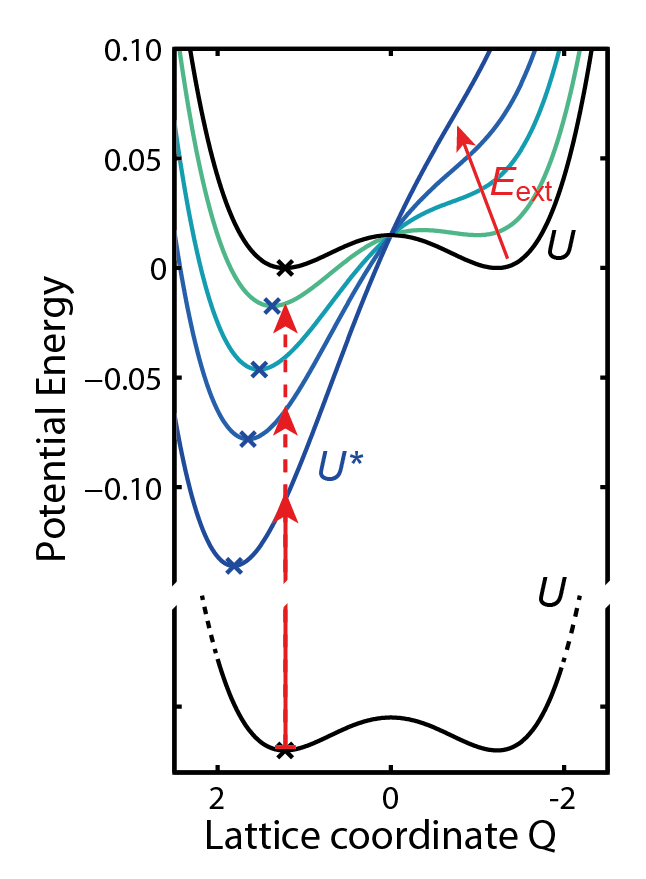
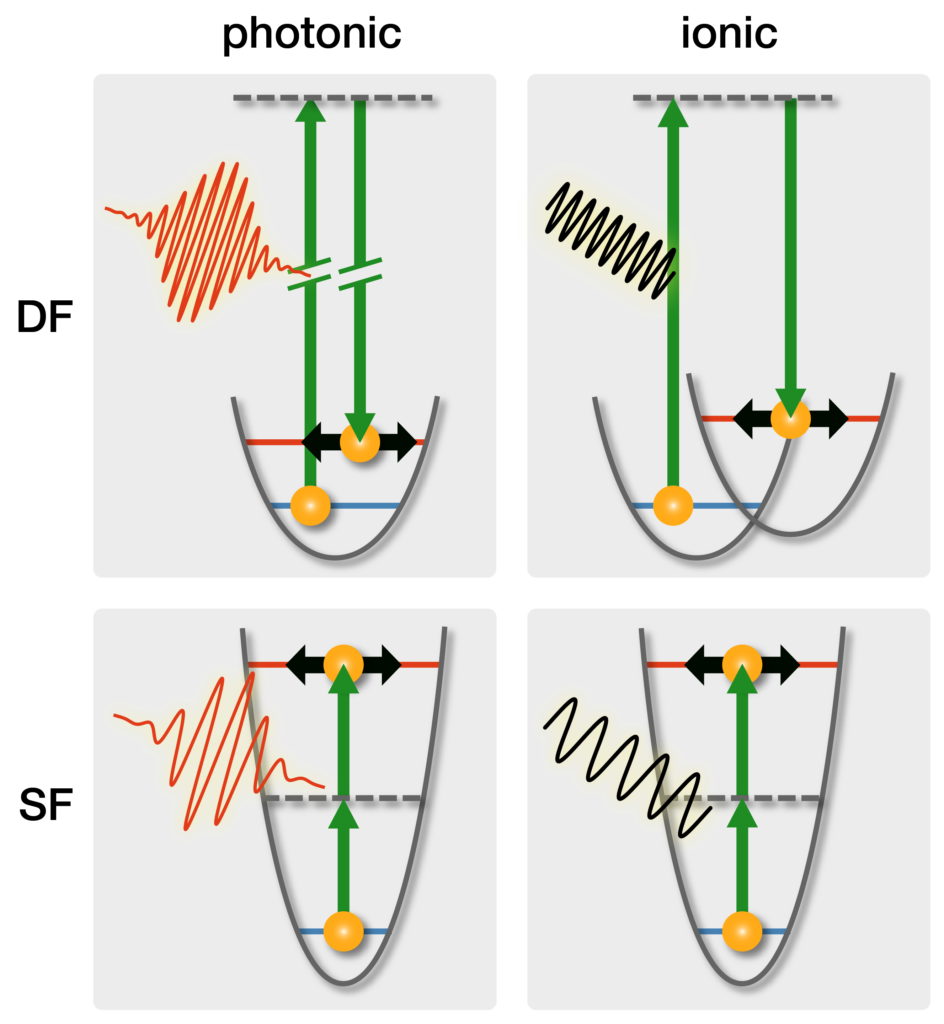
In our group we are aiming to investigate the impact of such anharmonic lattices and dynamic disorder on electron-phonon and phonon-phonon coupling. By either electronic-state specific excitation (by tunable VIS excitation) or phase selective phonon excitation (by intense THz or MIR fields), we study the coherent lattice response and/or transient electronic properties. Especially, strong phonon-phonon coupling may lead to new handles for coherent control via nonlinear phononics. With an extension of the nonlinear phononics framework by the sum-frequency (SF, upconversion) counter part of ionic Raman scattering, we theoretically demonstrated the mode selective and phase sensitive lattice control with intense below-resonance THz fields (see selected references below).
sdFurther, by direct phonon excitation, we want to gain insights into electron-phonon interaction in emerging semiconductors (e.g. lead halide perovskites), which is important for the understanding of their optoelectronic performance and may lead to design principles for a new class of defect tolerant semiconductors (in collaboration with X.-Y. Zhu group at Columbia University, New York).
![]() Molecular rotational dynamics in solids
Molecular rotational dynamics in solids
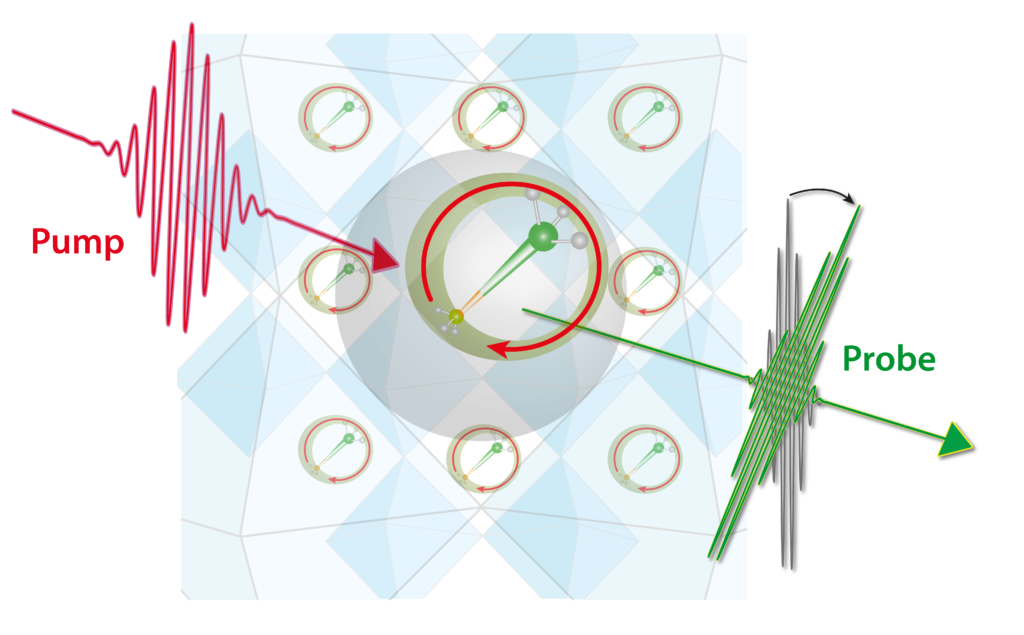
Another source for structural disorder and local dipole moments (or even polar nano domains) are small organic molecules that can be periodically situated in an inorganic cage compound. The degree of rotational freedom may vary from completely free rotations, over angular jumps and cone wobbling, to orientation locked states depending on the crystallographic phase of their inorganic host matrix.
Most prominent representatives of this materials class are hybrid organic-inorganic lead halide perovskites (HOIPs), where organic cations, such as methylammonium (MA) or formamidinium (FA), play the role of rattling ions in the inorganic cage. The contributions of the orientational degrees of freedom and the cation rotational dynamics to the unique optoelectronic performance of HOIPs are still under debate in contemporary research and need more elaborate experimental tools.
Currently, our group conducts THz induced Kerr-effect (TKE) studies to investigate the reorientation dynamics and possible coherent rotations of the A-site cations in HOIPs. We investigate HIOPs with different guest cations and in different structural phases of the inorganic host matrix. This concept of molecular rotational spectroscopy in solids will be extended to similar material classes in future. Our studies will provide a better understanding of coupling dynamics between molecular rotations, phonons and electric properties.
![]() Structural dynamics modulating spin- and magnetization dynamics
Structural dynamics modulating spin- and magnetization dynamics
Angular momentum transfer between (spin polarized) electronic states and the crystal lattice, has been a long-standing research question, e.g. in the field of ultrafast demagnetization, where the electron spin angular momentum must finally dissipate to the lattice. In general, the lattice is mostly considered as an incoherent loss channel for angular momentum.
In contrast, we investigate how the lattice and its angular momentum can be used to drive ultrafast magnetization dynamics. Together with the Kampfrath group at FU Berlin, we could show that resonant lattice excitations can lead to hidden spin states, which are not accessible in thermodynamic equilibrium or via ultrafast electronic excitation (see reference below). In following projects, we will specifically focus on the angular momentum contribution of coherently excited lattice states.
